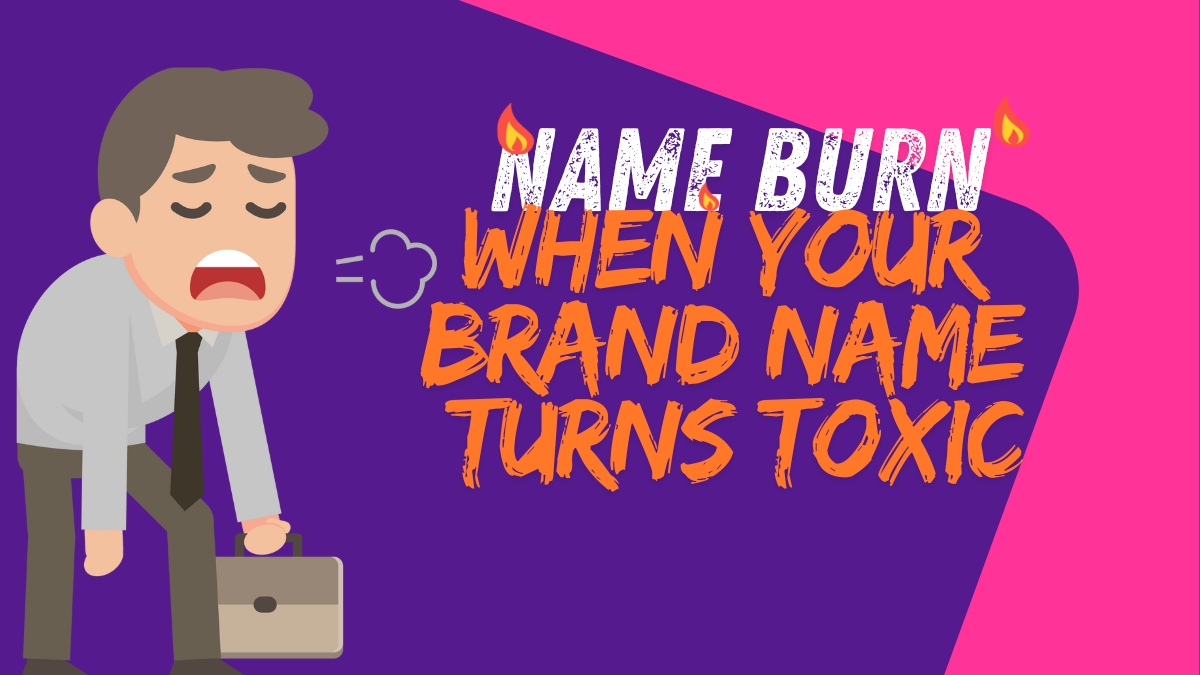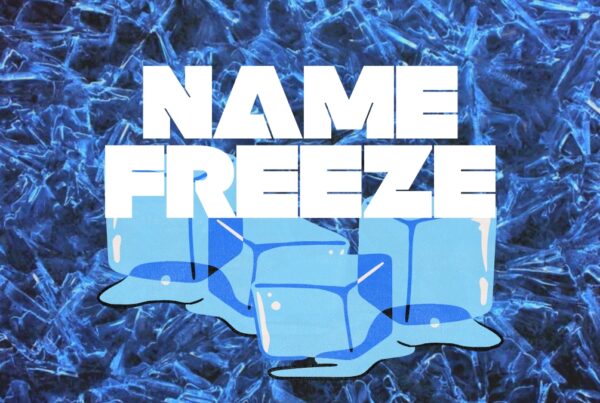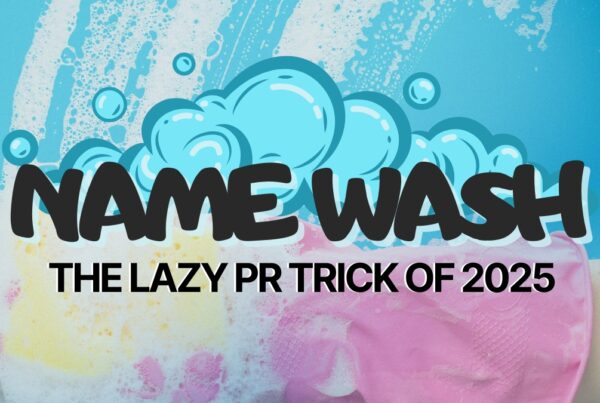What Happens When a Name Starts Working Against You
A brand name can occasionally become a liability in addition to being out of date. A bad name choice might cause debate, link your company to unfavorable associations, or even make it impossible to find. Companies frequently have to make the difficult decision to either double down or leave when a name becomes toxic.
This article will look at actual case studies of businesses that had to alter their names because of unfavorable public opinion, legal risks, cultural changes, or bad timing. We’ll also discuss what went wrong and what can be learned by others.
When a Name Crosses the Line
Case Study 1: Aunt Jemima → Pearl Milling Company
Although it was founded on racial stereotypes, Aunt Jemima pancakes were one of the most well-known brands in the United States for many years. The character was inspired by idealized images from the era of slavery and minstrel shows. Although the name persisted for more than 130 years, Quaker Oats, the parent company, was obliged to change it due to cultural changes and the increase in social consciousness, particularly during the 2020 racial justice campaigns.
Lesson: Historical branding can carry heavy baggage. Even if it’s long-standing, if it clashes with modern values, it may not survive the spotlight.
Case Study 2: ISIS Wallet → Softcard
ISIS Wallet has nothing to do with terrorism when it was first released in 2010 as a mobile payment app by AT&T, Verizon, and T-Mobile. However, by 2013, the acronym was widely linked to the extremist organization known as Islamic State. The business changed its name to Softcard right away.
Lesson: Sometimes external events can change the meaning of your name overnight. Be prepared to act fast when associations shift beyond your control.
Case Study 3: Urban Dictionary’s Effect on Names
Many entrepreneurs have discovered the hard way that their brand name, while sounded cool, had unfavorable slang implications. For instance, the dating app “Bang With Friends” acquired notoriety for its provocative angle, but it encountered problems with app stores and customer trust. Later on, they changed their name to Down.
Lesson: Always check slang, translations, and online associations before settling on a name. What sounds edgy might hurt credibility.
The Cost of a Toxic Name
Rebranding under pressure is rarely smooth. It often comes with:
- Loss of brand equity: Years of recognition can vanish with one name change
- Confused customers: Especially if the rollout isn’t clearly explained
- Legal costs: From trademark disputes to crisis management
- Operational headaches: Updating packaging, websites, domains, and internal systems
But the cost of not changing can be even higher. If your name keeps people from trusting your product, working with your team, or recommending your brand, it becomes a barrier to growth.
How to Spot a Name Risk Early
You can’t predict every crisis, but you can reduce the odds. Watch out for:
- Names tied to real people or places that could become controversial
- Tricky acronyms that may take on new meanings
- Cultural insensitivity or unintentional stereotypes
- Obvious trademark overlaps
- Names that rely on shock value
Vet your name through multiple lenses — legal, cultural, and customer perception. And revisit it over time. What worked five years ago might not work today.
Damage Control: What to Do When the Name Has to Go
If you’re caught in a naming crisis, here’s how to handle it:
1. Act Quickly and Clearly
Delaying can make things worse. Be transparent with your audience and show that you take concerns seriously.
2. Don’t Defend the Old Name
Trying to justify a bad name only draws more attention to it. Acknowledge the mistake, explain your plan, and move forward.
3. Turn the Reset Into a Story
Use the transition as a moment of transformation. Tell your audience what’s changing and why. Make the new name feel like a step forward, not a cover-up.
4. Secure Your Brand Assets Before You Announce
Once the public knows you’re changing, domain squatters and imitators may move fast. Lock in what you need before going live.
The Long-Term Impact of Getting It Right
In the long run, a good name change—especially one that was prompted by a crisis—can improve your brand. It makes it obvious that your business values trust over obstinacy, listens, and adjusts. Restored consumer loyalty, improved media attention, and even an increase in internal morale are common outcomes for brands that handle this transition transparently.
For instance, Weight Watchers was rebranded as WW. Although the adjustment was not prompted by controversy, it did represent a more general shift in the discourse surrounding wellness. It demonstrated that the company was sensitive to changing cultural norms. Similar to this, Dunkin’ was not fleeing anything when it removed the word “Donuts” from its name; rather, it was pursuing a more adaptable, forward-thinking brand.
The most important thing is how you proceed with the name change, even if it begins as a damage control measure. Whether you gain or lose momentum depends on how well your post-rebrand narrative works.
Cultural Sensitivity and Global Naming Challenges
A name’s cultural translation can determine its value in today’s interconnected world. The hard way is how some brands have discovered this. Even if the impact was not as severe as rumors suggested, it nevertheless emphasizes the significance of cultural and linguistic checks. For instance, Chevrolet failed to recognize that “no va” in Spanish means “it doesn’t go” when they introduced the Nova in Latin America.
Other businesses have come under fire for names that unintentionally referred to sensitive historical or political themes. In some places, a name that sounds innocuous could cause strong feelings or outrage.
Spend some time examining your name from a cross-cultural perspective if you’re creating a worldwide brand or intend to go global. Examine translations, interpretations, and even how current events might be interpreted. What works well in one market may be awkward or dangerous in another.
Psychological Reactions to Name Controversies
Name conflicts generate emotional responses in addition to marketing issues. Consumers who support a brand that later reveals a problematic identity may feel lied to, betrayed, or embarrassed. When that occurs, confidence decreases and restoring it requires more than a fresh press release or logo.
The change might be difficult for internal teams as well. Workers who have centered their careers on a specific brand identity could experience confusion or annoyance. Transparency is important for this reason. Both internal and external audiences will find it simpler to stay on board if the organization displays integrity, humility, and a clear plan for the future.
Never should a name change seem like a cover-up. It ought to seem like a recognition, an advancement, and an opportunity to regain confidence.
Long-Term Brand Rebuilding After a Name Change
The process of rebuilding the brand starts as soon as the dust settles. A new name is only the beginning. The true test will be how successfully the new identity captures the essence of the company and how consistently it is used. This includes fresh material, improved positioning, updated messaging, and frequently a change in tone.
Following a naming dispute, brands must also regain the confidence of the media. Smart brands take it a step further by using the attention to highlight new projects, social responsibility efforts, or company milestones that support the new direction. Press coverage typically focuses on the transition itself.
It’s also a good moment to make community development investments. Advocates can be created from devoted clients who remained during the changeover. Engage them in campaigns, solicit their opinions, and show them appreciation for their support. The link gets stronger the more inclusive the rebranding process feels.
Finally, track your development. Monitor key performance indicators throughout time, such as customer sentiment, engagement, and brand recall. A good rebrand will be evident in the way people discuss and engage with your business, in addition to its appearance.
Final Thoughts
Holding onto your name out of pride or tradition might hurt your brand when it starts to cause issues. Being able to clearly identify when to leave can not only safeguard your brand but also revitalize it. Not only avoiding embarrassment is the aim. Rebuilding trust and continuing to grow are the goals.
But how do you actually go about choosing a new name that gives your brand a true second chance? Our next article, Name Reset: Rebranding for a Second Chance, walks you through the process of letting go and starting fresh — strategically.




